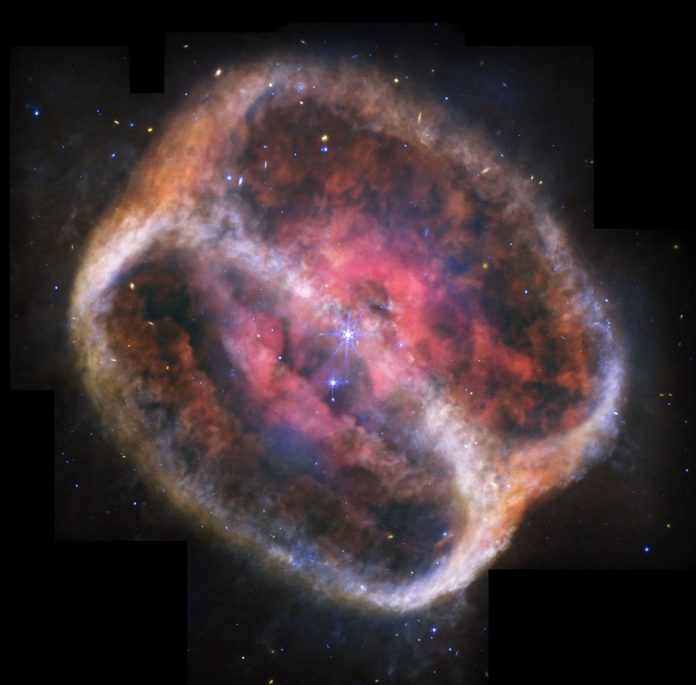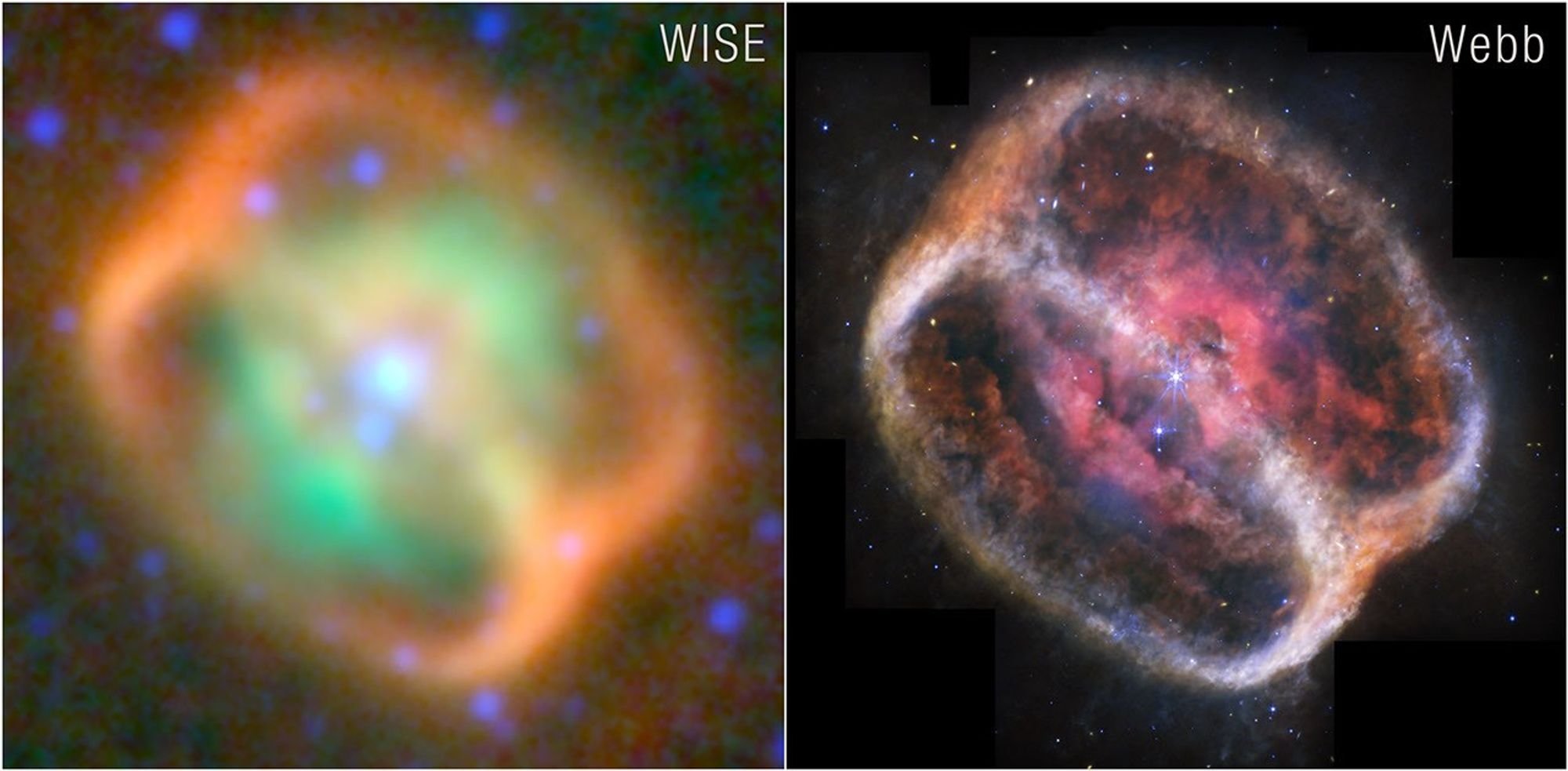
Planetary nebula NGC 1514, a celestial display of a dying star’s final act, has been brought into stunning clarity by NASA’s James Webb Space Telescope (JWST). New mid-infrared observations reveal its intricate structures as never before
A detailed look at NGC 1514
The mid-infrared data from NASA’s JWST have brought gas and dust ejected by a dying star at the heart of NGC 1514 into sharp relief. The telescope’s observations have revealed that the rings, previously only detectable in infrared light, now appear as “fuzzy” clumps arranged in complex, tangled patterns.
Webb’s data makes it easier to observe holes punched through the bright pink central region of the nebula, providing new insights into its dynamic nature.
“Before Webb, we weren’t able to detect most of this material, let alone observe it so clearly,” said Mike Ressler, a researcher and project scientist for Webb’s MIRI (Mid-Infrared Instrument) at NASA’s Jet Propulsion Laboratory. Ressler’s discovery of the rings around NGC 1514 in 2010, using NASA’s Wide-field Infrared Survey Explorer (WISE) image, laid the groundwork for these new observations. “With MIRI’s data, we can now comprehensively examine the turbulent nature of this nebula,” he added.

Image: ©NASA, ESA, CSA, STScI, NASA-JPL, Caltech, UCLA, Michael Ressler (NASA-JPL), Dave Jones (IAC)
Examining the hourglass shape and an arc of dust
The scene unfolding in NGC 1514 has been developing for at least 4,000 years and will continue to evolve over millennia. At the nebula’s centre, two stars, appearing as one in Webb’s view, are highlighted by brilliant diffraction spikes. These stars are locked in a tight, elongated nine-year orbit, surrounded by an arc of dust, depicted in orange in the image.
One of these stars, once significantly more massive than our Sun, played the primary role in shaping this cosmic display. David Jones, a senior scientist at the Institute of Astrophysics on the Canary Islands, explained, “As it evolved, it puffed up, throwing off layers of gas and dust in a very slow, dense stellar wind.” Jones’s 2017 research confirmed the presence of a binary star system at the nebula’s core.
As the star shed its outer layers, its hot, compact core remained. This white dwarf star then produced faster but weaker stellar winds, which may have swept up the ejected material into thin shells. Webb’s observations reveal that NGC 1514 is tilted at a 60-degree angle, giving it an appearance reminiscent of a tilted can. However, scientists believe the nebula is more likely shaped like an hourglass with truncated ends. Hints of this “pinched waist” can be seen where the orange dust forms shallow V-shapes.
The hourglass shape might be attributed to the interaction between the two central stars. Jones suggests, “When this star was at its peak of losing material, the companion could have gotten very, very close. That interaction can lead to shapes that you wouldn’t expect. Instead of producing a sphere, this interaction might have formed these rings.”
A network of structures
Webb’s observations also reveal the nebula’s rings’ uneven illumination and textured appearance. “We think the rings are primarily made up of very small dust grains,” Ressler said. “When those grains are hit by ultraviolet light from the white dwarf star, they heat up ever so slightly, which we think makes them just warm enough to be detected by Webb in mid-infrared light.”
In addition to dust, the telescope detected oxygen in the nebula’s clumpy pink centre, particularly at the edges of the bubbles or holes.
Notably, NGC 1514 lacks carbon and complex carbon compounds, such as polycyclic aromatic hydrocarbons, commonly found in other planetary nebulae. This absence might be due to the mixing of ejected material by the orbiting central stars, which could have hindered the formation of these molecules.
The simpler composition allows light from the stars to penetrate farther, revealing the faint, cloud-like rings.
Viewing dying stars: Expanding our view of the universe with the JWST
NGC 1514 is located approximately 1,500 light-years from Earth in the Taurus constellation. Astronomer William Herschel’s 1790 observation of NGC 1514 marked it as the first deep-sky object to appear genuinely cloudy, unlike star clusters. Now, with the advanced capabilities of the James Webb Space Telescope, our view of this dying star’s energetic display is clearer than ever before.










